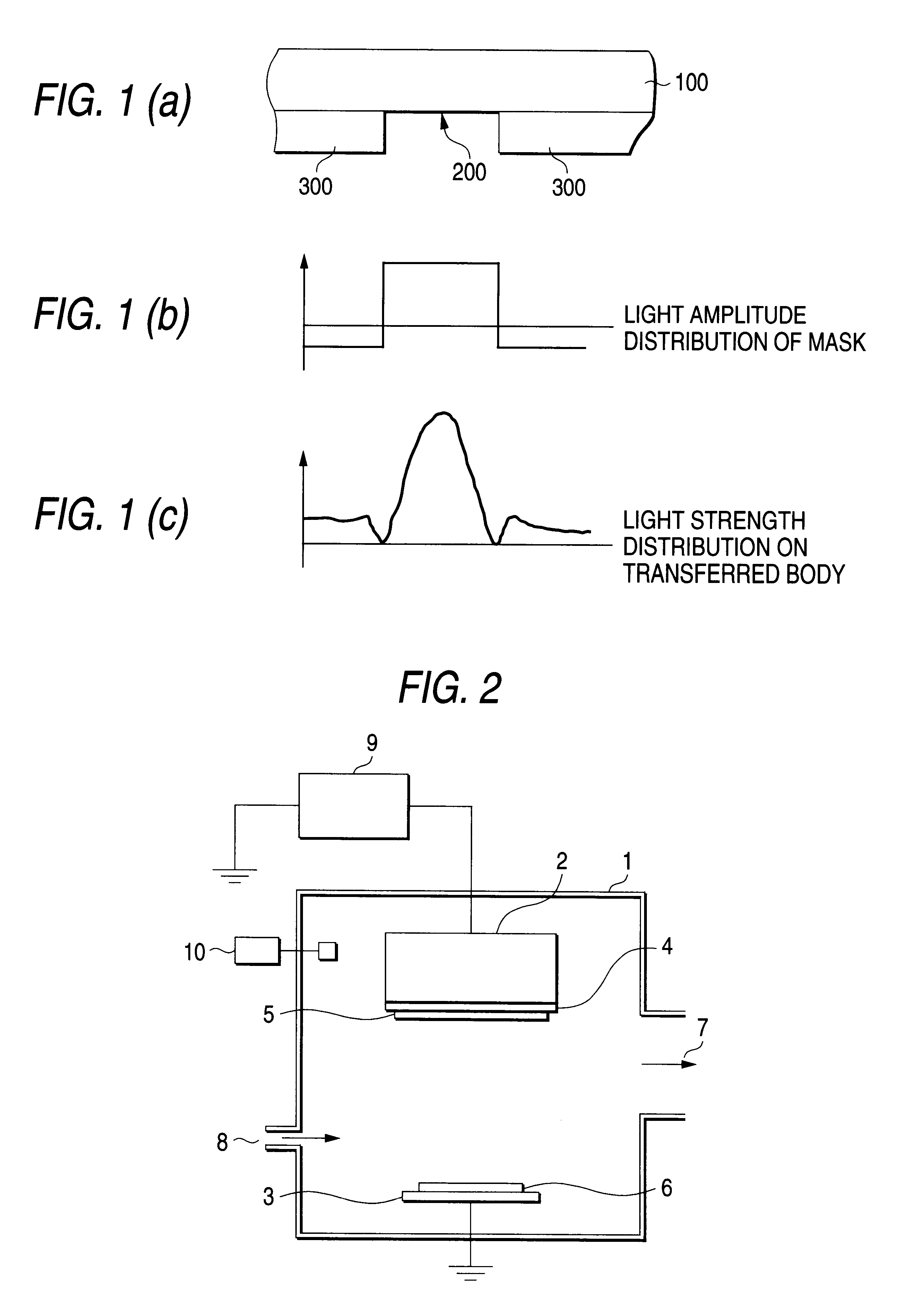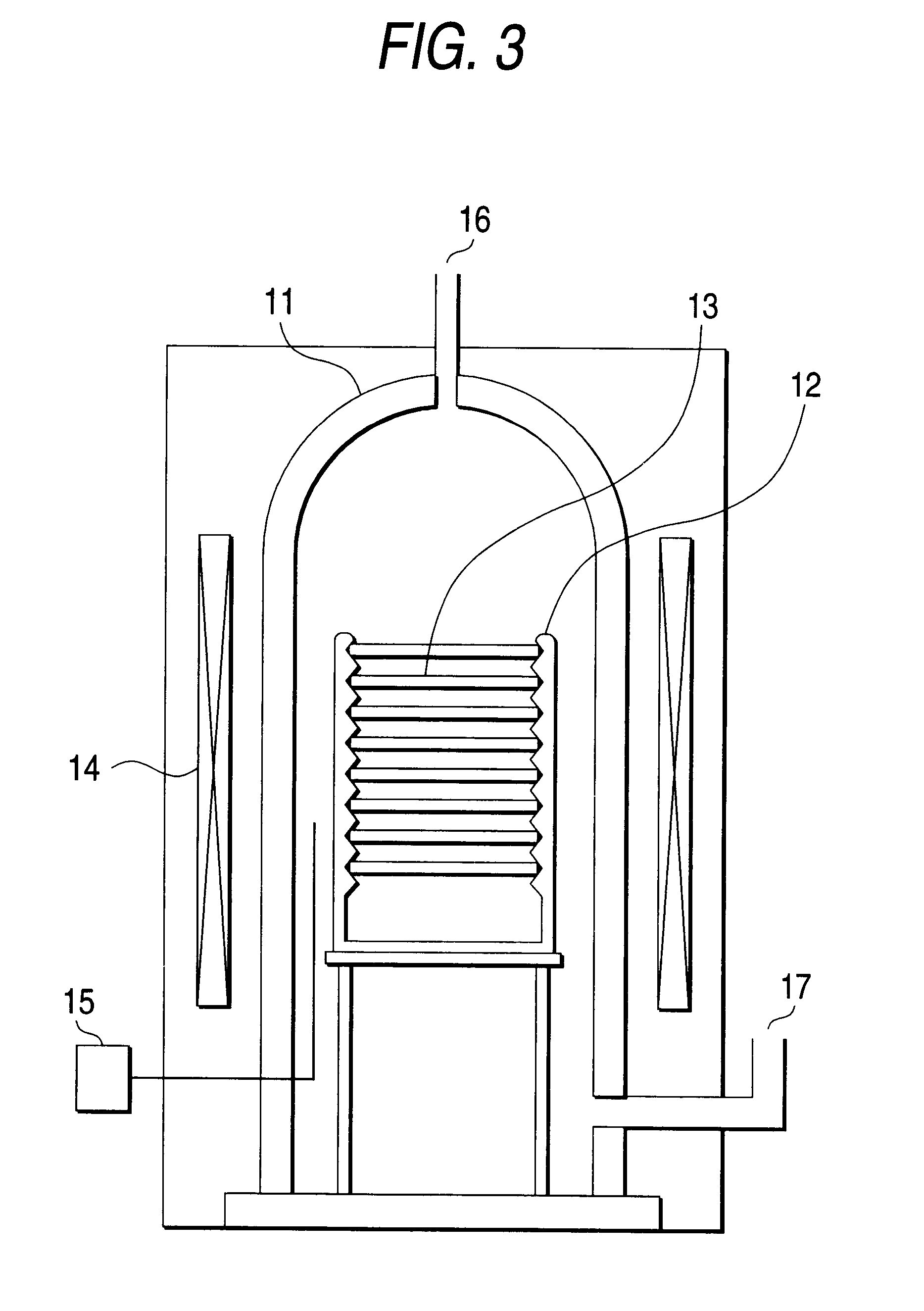Phase shift mask blank, phase shift mask, and method for manufacturing the same
a phase shift mask and mask technology, applied in the field can solve the problems of laser light gain in wavelength shortening to damage the translucent area, structural complexity of phase shift masks, and high production cost, and achieve the effects of reducing the number of parts and reducing the cost of production
- Summary
- Abstract
- Description
- Claims
- Application Information
AI Technical Summary
Benefits of technology
Problems solved by technology
Method used
Image
Examples
Embodiment Construction
, too, the film has larger surface roughness because of the higher pressure of film formation and is therefore inferior in acid resistance and alkali resistance as compared with embodiment 1. In Comparative Example 3 oxygen was introduced to increase the transmittance.
In Reference Example 1, although the surface roughness is small owing to the low pressure in film formation, the film stress is high due to the low heat treating temperature. Further, the film is slightly inferior in acid resistance, alkali resistance and irradiation resistance.
Where the metal content in the target exceeds 30 mol % as in Reference Example 2, the film has too low a transmittance and poor alkali resistance. Where the metal content is less than 5 mol % as in Reference Example 3, the target cannot maintain a stable discharge.
Incidentally, where the films of the foregoing embodiments and Examples were not subjected to the heat treatment, they had 1.3 to 2.5 times as much film stress as the respective values...
PUM
| Property | Measurement | Unit |
|---|---|---|
| Ra | aaaaa | aaaaa |
| surface roughness | aaaaa | aaaaa |
| Ra | aaaaa | aaaaa |
Abstract
Description
Claims
Application Information
 Login to View More
Login to View More - R&D Engineer
- R&D Manager
- IP Professional
- Industry Leading Data Capabilities
- Powerful AI technology
- Patent DNA Extraction
Browse by: Latest US Patents, China's latest patents, Technical Efficacy Thesaurus, Application Domain, Technology Topic, Popular Technical Reports.
© 2024 PatSnap. All rights reserved.Legal|Privacy policy|Modern Slavery Act Transparency Statement|Sitemap|About US| Contact US: help@patsnap.com










